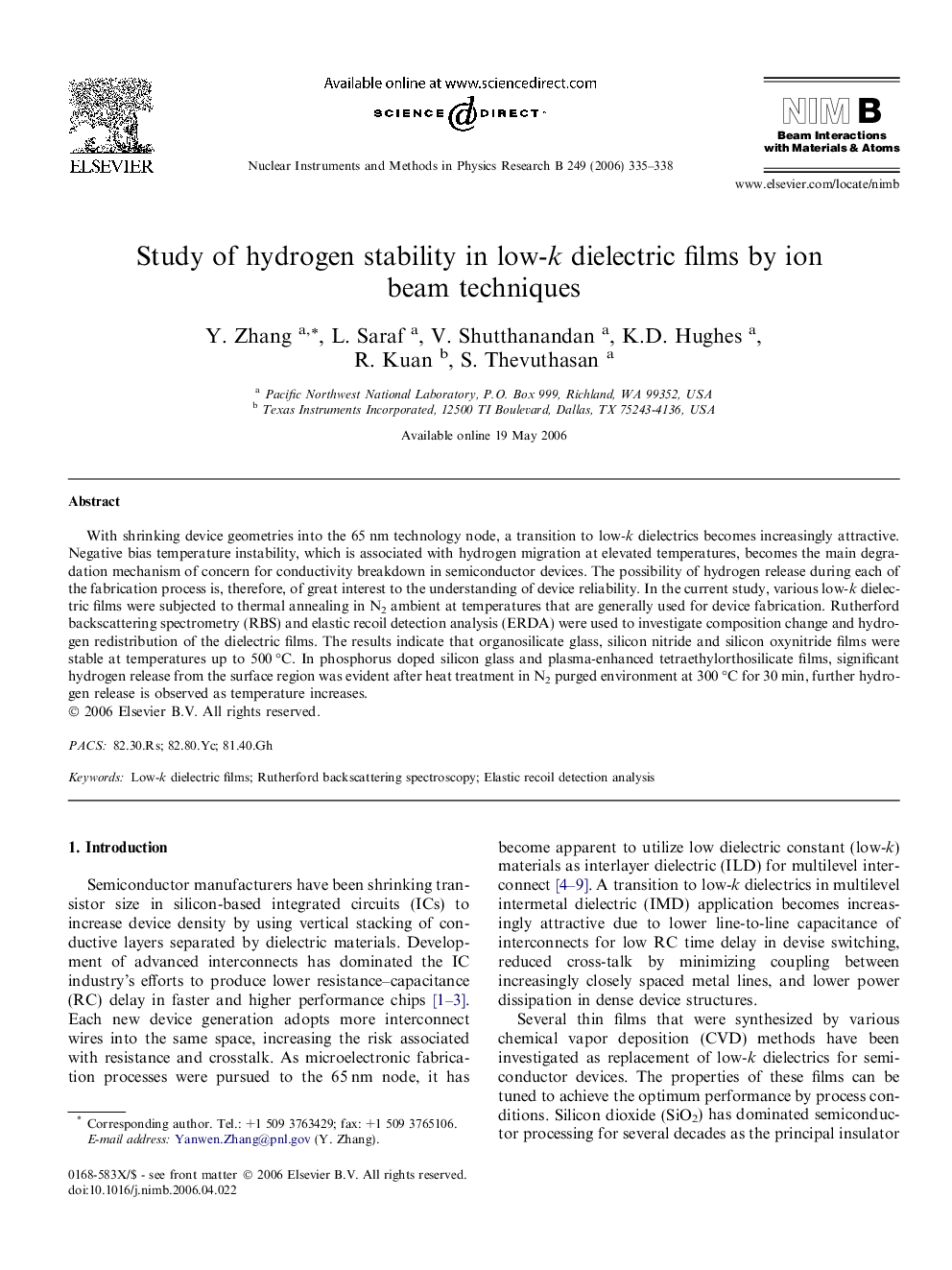| Article ID | Journal | Published Year | Pages | File Type |
|---|---|---|---|---|
| 1686512 | Nuclear Instruments and Methods in Physics Research Section B: Beam Interactions with Materials and Atoms | 2006 | 4 Pages |
With shrinking device geometries into the 65 nm technology node, a transition to low-k dielectrics becomes increasingly attractive. Negative bias temperature instability, which is associated with hydrogen migration at elevated temperatures, becomes the main degradation mechanism of concern for conductivity breakdown in semiconductor devices. The possibility of hydrogen release during each of the fabrication process is, therefore, of great interest to the understanding of device reliability. In the current study, various low-k dielectric films were subjected to thermal annealing in N2 ambient at temperatures that are generally used for device fabrication. Rutherford backscattering spectrometry (RBS) and elastic recoil detection analysis (ERDA) were used to investigate composition change and hydrogen redistribution of the dielectric films. The results indicate that organosilicate glass, silicon nitride and silicon oxynitride films were stable at temperatures up to 500 °C. In phosphorus doped silicon glass and plasma-enhanced tetraethylorthosilicate films, significant hydrogen release from the surface region was evident after heat treatment in N2 purged environment at 300 °C for 30 min, further hydrogen release is observed as temperature increases.
